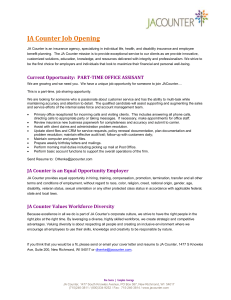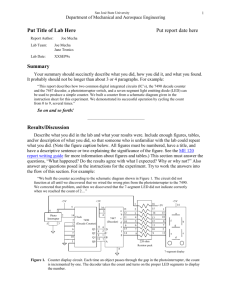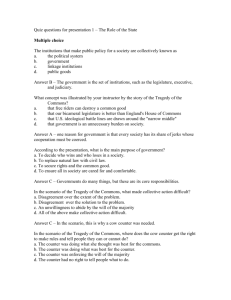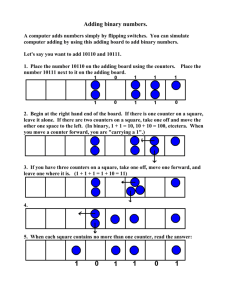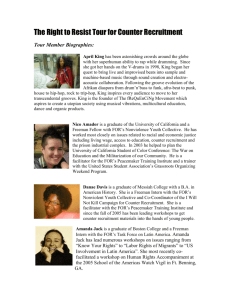F. Counters
advertisement
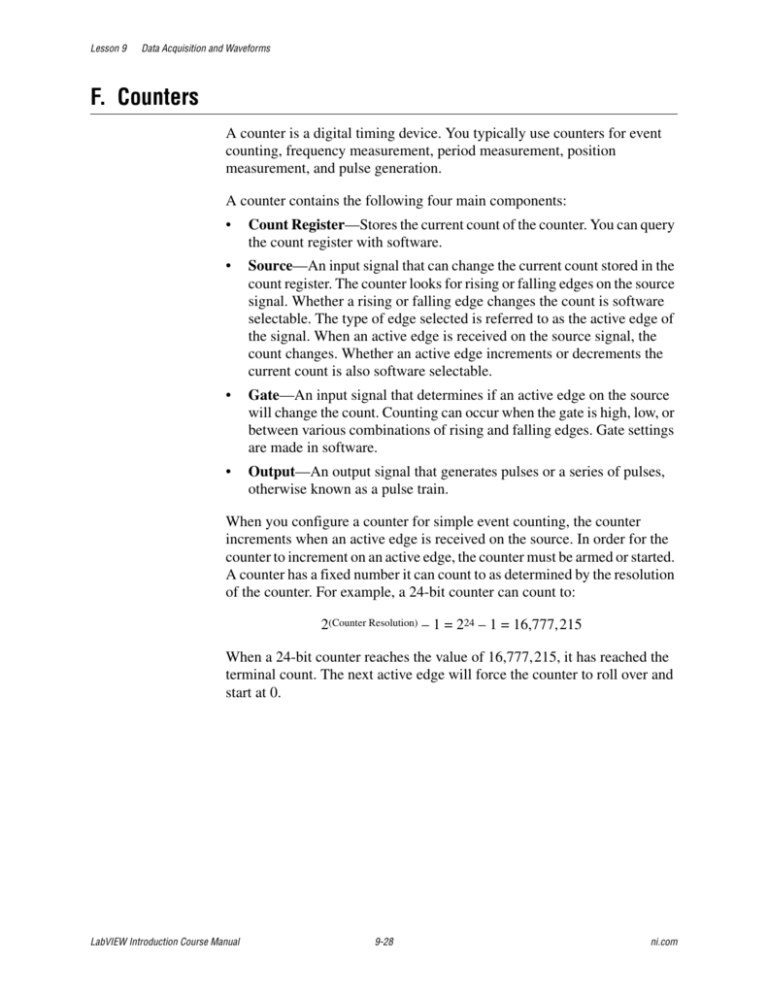
Lesson 9 Data Acquisition and Waveforms F. Counters A counter is a digital timing device. You typically use counters for event counting, frequency measurement, period measurement, position measurement, and pulse generation. A counter contains the following four main components: • Count Register—Stores the current count of the counter. You can query the count register with software. • Source—An input signal that can change the current count stored in the count register. The counter looks for rising or falling edges on the source signal. Whether a rising or falling edge changes the count is software selectable. The type of edge selected is referred to as the active edge of the signal. When an active edge is received on the source signal, the count changes. Whether an active edge increments or decrements the current count is also software selectable. • Gate—An input signal that determines if an active edge on the source will change the count. Counting can occur when the gate is high, low, or between various combinations of rising and falling edges. Gate settings are made in software. • Output—An output signal that generates pulses or a series of pulses, otherwise known as a pulse train. When you configure a counter for simple event counting, the counter increments when an active edge is received on the source. In order for the counter to increment on an active edge, the counter must be armed or started. A counter has a fixed number it can count to as determined by the resolution of the counter. For example, a 24-bit counter can count to: 2(Counter Resolution) – 1 = 224 – 1 = 16,777,215 When a 24-bit counter reaches the value of 16,777,215, it has reached the terminal count. The next active edge will force the counter to roll over and start at 0. LabVIEW Introduction Course Manual 9-28 ni.com Lesson 9 Exercise 9-6 Objective: Data Acquisition and Waveforms Simple Event Counting VI To create a simple event counting VI. Complete the following steps to build a VI that counts pulses from the quadrature encoder on the DAQ Signal Accessory. Front Panel 1. Open a blank VI and build the following front panel. Block Diagram 2. Build the following block diagram. Unbundle by name Place the DAQ Assistant Express VI, located on the Functions»Input palette, in a While Loop. Complete the following steps to configure the counter to perform event counting. a. Select Counter Input»Edge Count for the measurement to make. b. Select Dev1»ctr0 for the physical channel. c. In the Counter Input Edge Count Task Configuration dialog box that appears, leave the settings as they are. The default settings define the source of the counter as being Programmable Function Input (PFI) 8, which is the default source for counter 0. The DAQ Signal Accessory connects counter 0 source input to PFI 8. d. Click the OK button to close the Counter Input Edge Count Task Configuration dialog box. This saves all the settings specified for the task in the DAQ Assistant Express VI. 3. Save the VI as Simple Event Counting.vi in the C:\Exercises\ LabVIEW Basics I directory. © National Instruments Corporation 9-29 LabVIEW Introduction Course Manual Lesson 9 Data Acquisition and Waveforms 4. On the DAQ Signal Accessory, wire the A output of the quadrature encoder to the SOURCE input of counter 0. 5. Run the VI. Rotate the quadrature encoder knob on the DAQ Signal Accessory. Notice that the Number of Events indicator increments as you rotate the knob. The quadrature encoder knob produces pulses as you rotate the knob. The counter counts these pulses. 6. Stop the VI. 7. Double-click the DAQ Assistant Express VI, and change the Count Direction pull-down menu to Externally Controlled. Click the OK button to close the configuration dialog box. The DAQ Signal Accessory internally connects phase B of the quadrature encoder to the Up/Down line for counter 0. This can be used to determine the direction the knob has turned. 8. Run the VI. Rotate the quadrature encoder knob on the DAQ Signal Accessory. Notice that the Number of Events indicator decrements when you rotate the knob clockwise, and increments when you rotate the knob counterclockwise. 9. Save and close the VI. End of Exercise 9-6 LabVIEW Introduction Course Manual 9-30 ni.com

